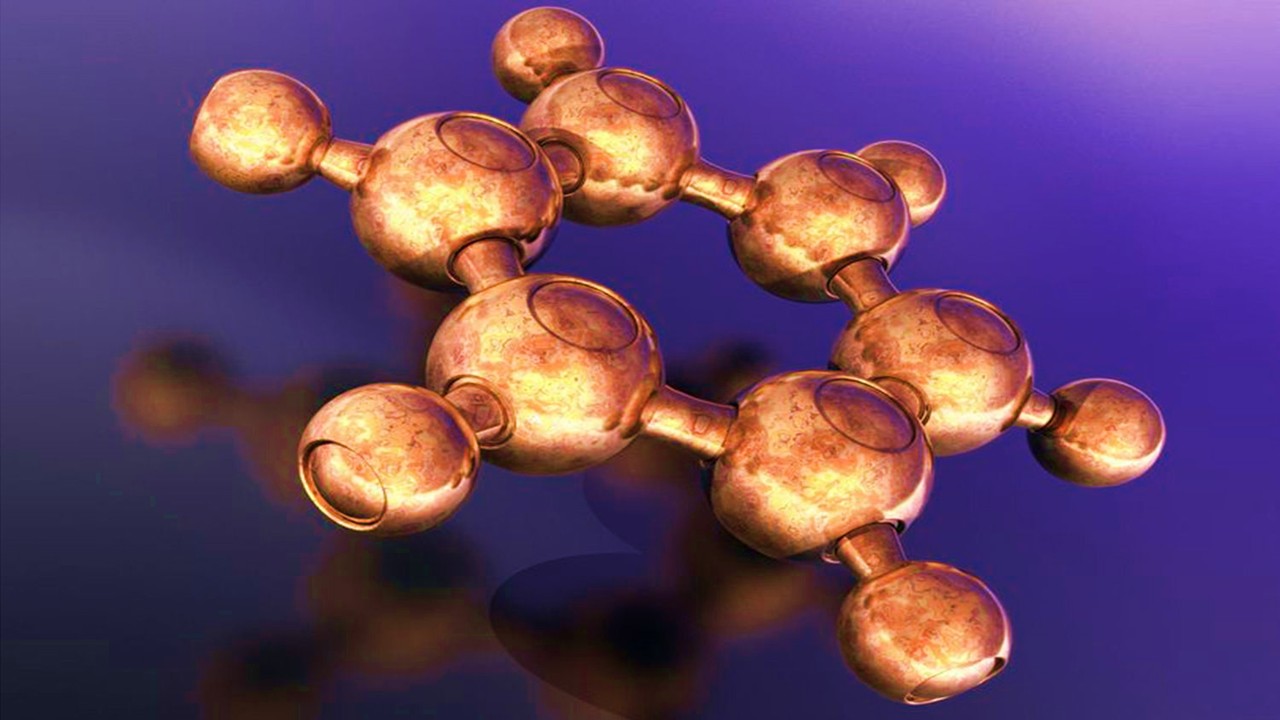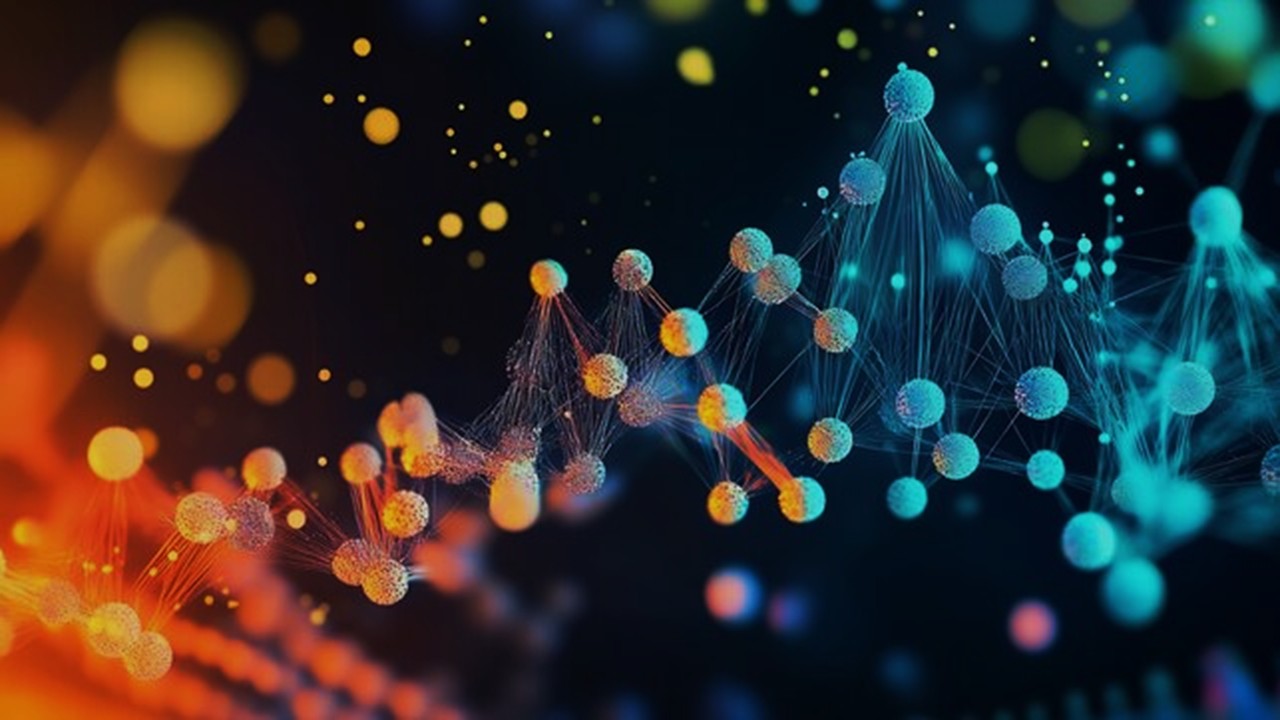The silent revolution in medicinal chemistry unfolds at the atomic level, where the three-dimensional arrangement of atoms—not just their connectivity—determines biological activity. Mirror-image molecules, known as enantiomers, are no longer mere curiosities but powerful tools reshaping drug discovery. These chiral counterparts, identical in atomic composition but non-superimposable like left and right hands, exhibit profoundly different interactions with biological systems. From D-peptides that evade protease degradation to “antidote” enantiomers that reverse drug overdoses, modern chemistry exploits chirality with increasing sophistication. The implications cascade through pharmacokinetics, toxicity profiles, and even patent strategies—making stereochemistry a central consideration rather than an afterthought in therapeutic development.
The Thalidomide Legacy: Chirality’s Hard Lessons
The thalidomide catastrophe of the 1960s remains the starkest demonstration of enantiomer-specific toxicity—one mirror image relieved morning sickness while its counterpart caused devastating birth defects. Toxicologists emphasize that this tragedy fundamentally changed how regulators view chiral drugs, leading to requirements for rigorous stereochemical characterization. Modern analytical techniques like chiral HPLC and X-ray crystallography now routinely assess each enantiomer’s pharmacological profile early in development.
Thalidomide’s mechanism reveals why chirality matters. The (R)-enantiomer binds cereblon, modulating TNF-α production, while the (S)-form interacts with embryonic growth factors. Ironically, the drug racemizes in vivo—a property now exploited in cancer therapy where both forms contribute antitumor effects while rigorous contraception manages risks.
The case spurred development of single-enantiomer drugs like esomeprazole, the (S)-isomer of omeprazole, which shows superior metabolic stability. Regulatory agencies now demand enantiopure formulations unless racemization occurs or all forms are safe—a standard that has prevented recurrences of thalidomide-like tragedies.
Emerging research suggests even “inert” enantiomers may have hidden activities. The distomer (less active form) of β-blockers exhibits unique cardioprotective effects, challenging traditional notions of chiral purity. This complexity drives modern approaches to characterize all stereoisomers thoroughly rather than dismissing inactive forms.
The field now views thalidomide not just as a cautionary tale but as a revelation of chirality’s profound biological significance—a lesson that transformed drug development protocols worldwide.
D-Peptides: Protease-Resistant Therapeutic Mimics
L-peptides dominate biology, but their mirror-image D-forms are carving a niche as uniquely stable therapeutics. Synthetic chemists note that D-peptides resist degradation because proteases evolved to recognize only natural L-amino acid sequences—a vulnerability flip that creates long-lasting drugs.
HIV fusion inhibitors showcase this advantage. Enfuvirtide’s D-amino acid substitutions prevent cleavage by serum proteases, extending half-life while maintaining viral gp41 binding. More recent designs like D-peptide “fit-ins” exploit this stability to target traditionally “undruggable” flat protein interfaces.
D-peptides also evade immune surveillance. Their unnatural chirality makes them invisible to MHC presentation, reducing immunogenicity concerns that plague L-peptide therapies. Some designs incorporate strategic L-residues to allow controlled immune recognition—a balance between durability and vaccine-like effects.
The synthesis challenge has been overcome through automated solid-phase methods using D-amino acids. Advanced algorithms now predict D-sequence folds that mimic L-protein binding sites—enabling rational design rather than random screening. Some systems even mix L- and D-segments to create “chimeric” peptides with customized stability profiles.
The frontier involves D-protein enzymes. While still experimental, these could catalyze reactions on natural substrates while being themselves degradation-proof—opening possibilities for long-acting biologic therapies.
Enantiomeric Antidotes: Chirality as Toxin Neutralization
The same chiral specificity that makes drugs selective also enables precise poisoning reversal—a concept driving “antidote enantiomers” that counteract overdoses through steric blockade. Toxicologists highlight how mirror molecules can occupy binding sites without triggering effects, competitively displacing active drugs.
Naloxone’s (R)-enantiomer reverses opioid overdoses by binding μ-receptors without activation, while its (S)-form is inactive. Newer designs like levomethorphan’s D-isomer selectively reverse respiratory depression without affecting analgesia—a targeted approach preserving pain relief while preventing fatal overdose.
Chiral antidotes extend beyond opioids. The (R)-enantiomer of thioridazine blocks the cardiotoxic (S)-form’s potassium channel effects, while D-methamphetamine counters L-methamphetamine’s neurotoxicity through transporter competition.
The strategy works for toxins too. D-phospholipases neutralize L-enzyme snake venoms by occupying membrane sites without hydrolyzing lipids—a clever use of chirality to create broad-spectrum antivenoms.
Future applications could include enantiomeric scavengers—D-proteins designed to bind and clear specific toxins while ignoring natural biomolecules.
Chiral Switches: Patent Life Extension Through Stereochemical Optimization
Pharmaceutical companies increasingly employ “chiral switches”—reformulating racemic drugs as single enantiomers to extend patent protection. Medicinal chemists note that while sometimes criticized as “evergreening,” these switches often bring genuine clinical benefits.
Escitalopram exemplifies a successful switch. The (S)-enantiomer of citalopram shows superior serotonin reuptake inhibition with fewer side effects, justifying its separate development. Similarly, armodafinil (R-modafinil) offers longer wakefulness promotion than the racemate.
The process isn’t straightforward. Some switches fail because distomers contribute unrecognized benefits—like in bupropion where both enantiomers affect different neurotransmitters. Modern development now profiles all stereoisomers early to identify optimal ratios.
Regulatory standards have tightened. Agencies now require proof that enantiopure forms outperform racemates—a bar that prevents frivolous switches while rewarding genuine improvements.
The future may see dynamic chiral drugs—formulations where enantiomer ratios adjust in response to physiological conditions for optimized effects.
Allosteric Chirality: Remote Control of Protein Conformation
Some enantiomers don’t compete at active sites but exert effects through distant chiral allosteric pockets—a phenomenon enabling unprecedented control over protein function. Structural biologists emphasize that these sites often show greater enantioselectivity than catalytic centers.
Muscarinic receptors illustrate this principle. (R)-bethanechol activates M1 receptors while its (S)-enantiomer binds an allosteric site that modulates signal duration—a separation of function enabling fine-tuned cholinergic control.
The approach helps target “undruggable” proteins. Allosteric chiral inhibitors of KRAS exploit pockets that emerge only when the protein adopts specific conformations—a strategy ineffective at the conserved active site.
The most sophisticated designs use one enantiomer to prime proteins for another’s action—creating sequential chirality-dependent activation. Some kinase inhibitors work this way, with the distomer inducing a conformation the eutomer then stabilizes.
Emerging work focuses on photoresponsive chiral allosteric modulators—compounds whose activity changes when light alters their effective chirality through isomerization.
Chiral Prodrugs: Stereochemistry as Metabolic Targeting
Prodrug strategies increasingly incorporate chirality to control activation sites and rates—leveraging enzyme stereospecificity for precise drug delivery. Pharmaceutical chemists highlight how small chiral modifications can dramatically alter metabolic fate.
L-Dopa’s (S)-configuration ensures decarboxylation occurs primarily in the brain, while D-Dopa is peripherally metabolized—a selectivity enabling Parkinson’s treatment without systemic side effects. Modern analogs extend this principle with engineered chiral stability.
Antiviral nucleosides exploit similar mechanisms. The L-enantiomer of cytosine analogs like lamivudine is phosphorylated selectively in infected cells—a chirality-gated activation that spares healthy tissue. This stereospecific activation arises because viral kinases recognize the unnatural L-configuration, while human enzymes preferentially process D-forms. Hepatitis B drugs like clevudine take this further, incorporating chiral modifications that not only control activation but also block viral polymerase more potently than their natural counterparts. The approach has proven particularly valuable for antiviral prodrugs, where targeting activation to infected cells minimizes off-target toxicity.
The frontier involves “chiral masking” of toxicophores. Adding enantiopure promoieties can steer metabolism away from harmful pathways—like D-acetyl groups that prevent certain hepatotoxic oxidations seen with their L-configured counterparts. Some designs incorporate chiral linkers that are cleaved only by disease-specific enzymes, such as tumor-associated proteases or bacterial β-lactamases. This dual control—both stereochemical and enzymatic—creates prodrugs that activate exclusively in pathological microenvironments. The strategy has been applied to chemotherapeutics like chiral derivatives of doxorubicin, which remain inert until encountering the unique redox environment of cancer cells.
Future designs may incorporate enzyme-triggered chiral inversion. Experimental systems already demonstrate light- or pH-sensitive prodrugs that flip configuration only at target sites, effectively “switching on” activity through stereochemical transformation. Other concepts involve chiral prodrugs that cyclize into active forms upon enzymatic processing—a structural metamorphosis that combines the selectivity of chirality with the precision of substrate-specific catalysis. These next-generation approaches promise to make chiral prodrug design not just a metabolic targeting tool, but a platform for spatiotemporal control of drug activation.
Chiral Toxicology: When Mirror Images Cause Mirror Effects
Some enantiomers produce completely distinct—sometimes opposite—toxicities rather than just differing potency. Toxicologists note these cases challenge traditional dose-response assumptions and require specialized safety screening paradigms. The phenomenon arises because biological systems process each enantiomer through divergent metabolic and receptor interaction pathways, leading to qualitatively different outcomes.
Ketamine’s (S)-enantiomer provides anesthesia while the (R)-form causes hallucinations. This divergence stems from differential engagement with NMDA receptor subtypes and downstream neural circuits. Similarly, (R)-fluoxetine functions as an antidepressant by inhibiting serotonin reuptake, while its (S)-counterpart independently promotes lipid accumulation through PPARγ activation—a duality that explains the racemate’s complex metabolic effects.
The mechanisms underlying enantiomer-specific toxicity vary widely. In some cases, like (S)-thalidomide’s teratogenicity versus (R)-thalidomide’s sedative effects, the enantiomers interact with entirely unrelated biological targets. Other molecules, like chiral β-agonists, bind the same receptor but induce opposite signaling outcomes due to subtle differences in binding orientation.
Regulatory agencies now mandate separate toxicity profiling for each enantiomer in racemic drugs. This requirement has uncovered previously hidden risks, such as the cardiotoxic hERG channel blockade by (R)-ondansetron that is absent in the therapeutic (S)-form. Interestingly, some distomers actually mitigate the eutomer’s toxicity—a phenomenon seen with (R)-propranolol’s protective effects against (S)-propranolol-induced bronchoconstriction.
The field is advancing toward predictive “chiral toxidromes.” Computational models now correlate specific stereochemical features with adverse effect profiles, allowing early identification of problematic enantiomers during drug design. These tools analyze how chiral center modifications alter metabolic fate, protein binding, and cellular stress responses—enabling proactive optimization of safety through stereochemistry.
Synthetic Breakthroughs: Making Mirror Molecules Accessible
The challenge of synthesizing single enantiomers has driven asymmetric chemistry innovations. Modern methods now achieve near-perfect stereocontrol even for complex architectures, transforming chiral drug development from serendipity to precision engineering. These advancements have made enantiopure synthesis not just possible but routinely practical across pharmaceutical pipelines.
Chiral auxiliaries like Evans’ oxazolidinones enable enantioselective C-C bond formation. These temporary stereochemical templates guide the formation of new chiral centers with >98% ee, then cleave to leave the desired configuration. Similarly, asymmetric hydrogenation with BINAP-derived catalysts produces β-amino acids and other building blocks with near-perfect stereoselectivity for peptidomimetic drugs.
Biocatalysis provides complementary tools for chiral synthesis. Engineered ketoreductases reduce prochiral ketones with perfect stereocontrol, while transaminases install chiral amines without protecting group manipulations. Multi-enzyme cascades now assemble complex chiral architectures from simple achiral precursors—like the chemoenzymatic synthesis of islatravir’s stereochemically dense core.
The frontier involves “chiral editing”—late-stage stereocenter modification. New C-H activation methods flip specific chiral centers while preserving others, allowing stereochemical optimization without total resynthesis. Transition metal catalysts with chiral ligands can epimerize single positions in polyfunctional molecules—a capability revolutionizing structure-activity studies.
Future directions may include fully automated chiral synthesis platforms. Integrating AI-based retrosynthesis with robotic asymmetric synthesis could enable on-demand production of any enantiopure structure, further democratizing access to mirror molecules for drug discovery. These systems would combine the best of small-molecule catalysis, biocatalysis, and photochemical methods to navigate chiral space with unprecedented efficiency.
The Stereochemical Renaissance in Drug Design
Once considered a subtle molecular nuance, chirality now stands at the forefront of medicinal chemistry strategy. The field has evolved from viewing enantiomers as analytical challenges to exploiting them as deliberate design elements that optimize pharmacology. This shift reflects deeper understanding of how molecular handedness influences every aspect of drug behavior—from target binding to metabolic fate.
Modern drug development treats stereochemistry as a multidimensional tool. Chiral centers are no longer just features to control but variables to engineer—whether for prodrug targeting, toxicity mitigation, or intellectual property expansion. The toolkit now includes not just resolution and asymmetric synthesis, but chiral switching, dynamic inversion, and stereochemical antidote design.
Emerging technologies promise even finer stereochemical control. From enzyme-triggered chiral morphing to photoresponsive enantiomer interconversion, the next generation of chiral drugs may adapt their configuration in response to biological cues. These advances will further blur the line between static molecules and dynamic therapies.
In this new era, the mirror image is more than a reflection—it’s a revelation. The stereochemical revolution has uncovered hidden dimensions in drug design, proving that sometimes, the difference between medicine and poison isn’t the atoms—it’s how they’re arranged in space.
Engr. Dex Marco Tiu Guibelondo, B.Sc. Pharm, R.Ph., B.Sc. CpE
Editor-in-Chief, PharmaFEATURES

Subscribe
to get our
LATEST NEWS
Related Posts

Medicinal Chemistry & Pharmacology
Polarity Alchemy: Strategic Charge Manipulation in Contemporary Drug Design
The future promises tunable therapies with polarity adjustable by light, magnetic fields, or bioorthogonal triggers.

Medicinal Chemistry & Pharmacology
Metabolic Saboteurs: Precision Drug Design Against Pathological Pathways
The next frontier in precision medicine lies in drugs that surgically disrupt disease-specific metabolic pathways and recalcitrant enzymes.
Read More Articles
Chemical Gale: How Wind Energy is Reshaping Industrial Manufacturing
The integration of wind energy into chemical manufacturing constitutes a fundamental reimagining of process chemistry.
Algorithmic Trials: How Decision Theory is Reshaping Decentralized Clinical Research
Decision theory offers a robust mathematical framework to design trials that enhance efficiency, uphold ethical standards, and better reflect the complexities of real-world therapeutic contexts.













